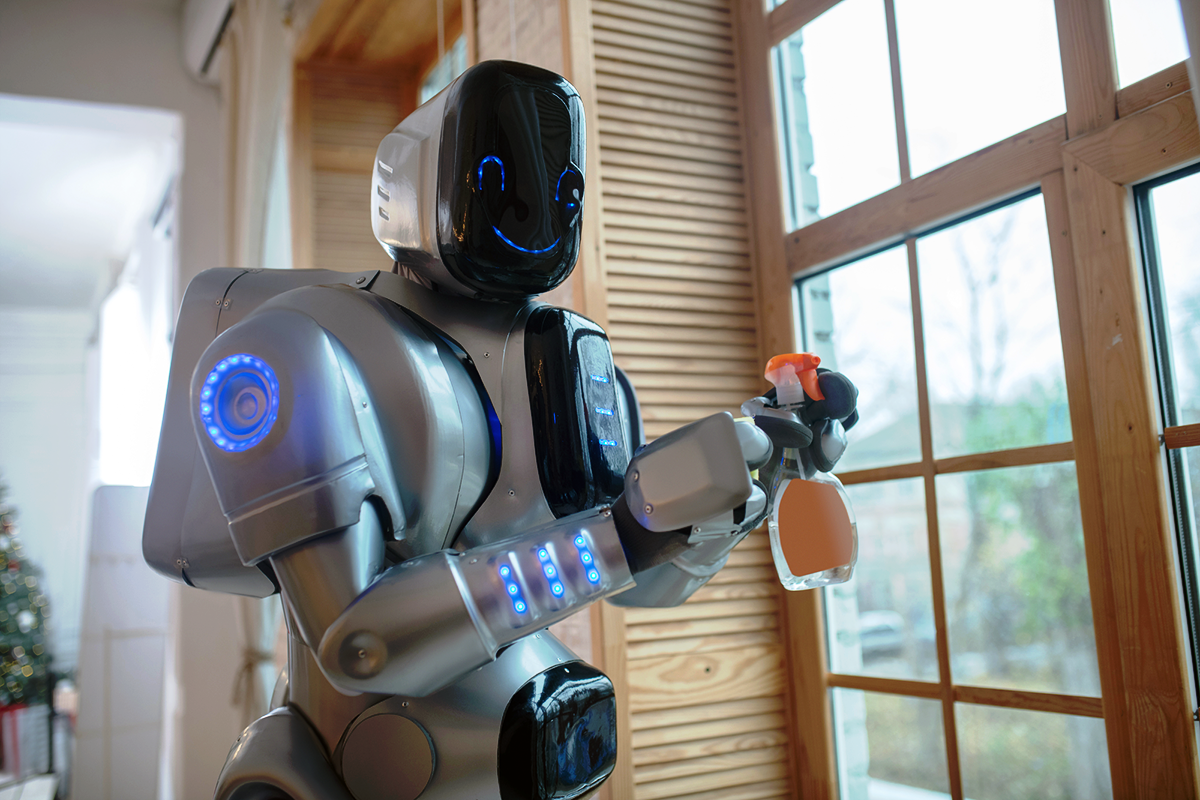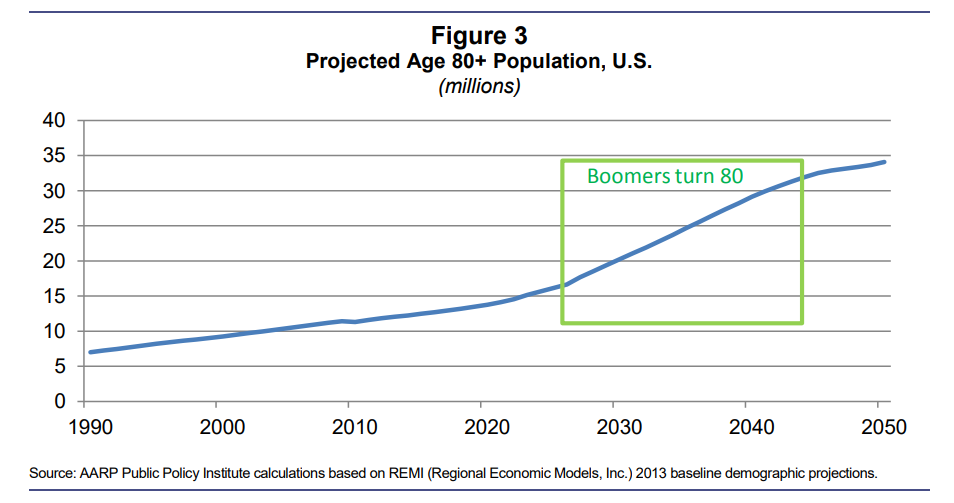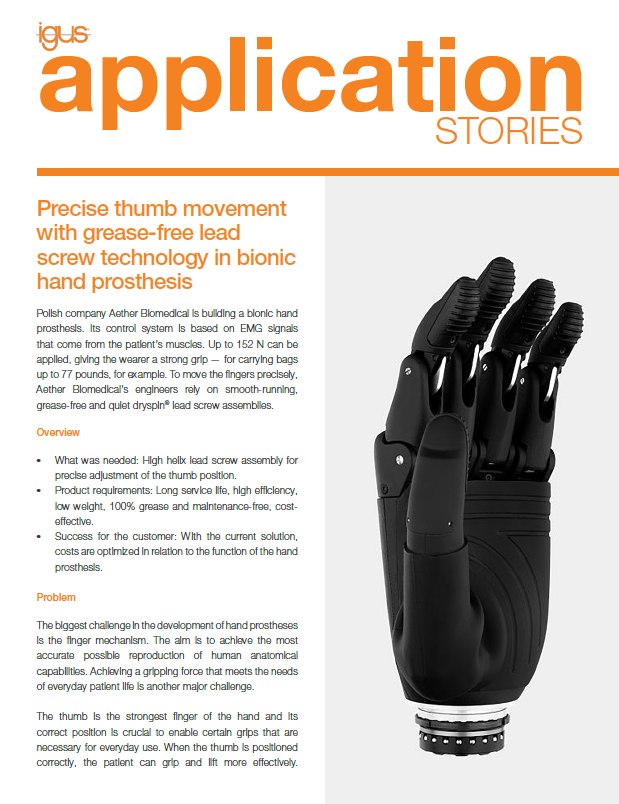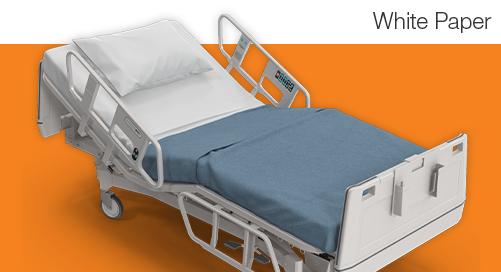Robots and the Future of Caregiving

Let's say that you are an older adult suffering from ALS, dementia, PTSD, Alzheimer's or any other disability. You are looking for an effortless and well-organized communication tool that will help you live independently and also provide you companionship. Does this product or service exist already? It turns out the answer is yes and the technology is just getting started.
Let's explore some challenges that older people are facing and potential solutions to look forward to in the future.
What happens when there are too many older adults to take care of?
According to a 2013 report by AARP, the majority of long-term care for older adults over the age of 80 in the US is provided by their family members – particularly their middle-aged daughters. However, the report shows that the number of available family caregivers is likely to shrink as the aging baby boomer population grows.
The number of people in their primary caregiving years (ages 45-64) is projected to increase by only 1 percent between 2010 and 2030. The 80-plus population, on the other hand, is projected to increase by a whopping 79 percent during that same time period, AARP reports. This is, in part, due to a decrease in the average number of children older women have and an increase in the percentage of older women with no children at all.
(Source: aarp.org)
Engineers are independently working to help solve this problem with advanced autonomous social robots that are capable of performing similar, if not the exact same, tasks as caregivers.
How can care robots improve our quality of life as we age?
Robots can make it easier for older people to remain self-sufficient and independent for a longer period of time while also reducing the burden on the family and formal caregivers. Also, robots can help reduce costs for public services or care-assurance budgets.
Robots supporting older people have a variety of uses:
- Preparing and consuming meals
- Daily toileting
- Doing housework
- Monitoring the user’s state of health
Also, care robots can provide users with companionship. Social robot interventions have been reported to improve their users’ mood and reduce stress levels.
(Source: https://www.jmir.org)
Top 5 care and social robots to watch
Older people may have difficulty keeping themselves busy and active, and companionship can encourage many of them to participate in daily activities. This is particularly true if they’re retired and live alone. Living a secluded life can lead to a lack of desire to keep your home clean, prepare proper meals, and take care of yourself. This could lead to depression or the inability to socialize.
(Source: roboticsbiz.com)
So, what solutions are being developed? Below is a list of the five care robots to watch according to Roboticsbiz.com, a tech portal for robotics and AI.
?ElliQ:
An “aging companion,” launched by Intuition Robotics. Designed to keep older adults active, independent, and engaged, the robot can remind people to take their medicines or schedule Ubers. Users can play games, access social media and conduct on-screen video chats to stay connected with the outside world.
(Source: the robot report)
ROBEAR:
A nursing robot that can perform power-intensive tasks, such as lifting a patient out of bed and placing him/her into a wheelchair or supporting a patient who needs help standing. It has actuators with a meager gear ratio, which enables joints to move very quickly and accurately. It also includes three types of sensors that enable gentle movement and ensure that the robot carries out tasks without harming patients.
(Source: The Verge)
SAM:
A mobile telepresence robot that nursing homes can use to frequently check up on their residents and provide them with non-medical care. SAM’s main objectives are to lower operating costs, staff turnover, accidents and isolation of older adults. Older people can see and interact with their on-screen interlocutors, which helps them feel accompanied and less alone.
(Source: IEEE Spectrum)
Zora:
An interactive caregiver controlled by a tablet. Zora can lead physical therapy classes and read TV shows, weather forecasts, or local news. Assisted living facilities have employed Zora to keep their residents entertained and active with dance and exercise.
(Source: robotlab)
Care-O-Bot:
A mobile robot assistant that can perform a range of household tasks, such as delivering food, drinks, and medications to the user and assisting in cooking and cleaning. It can place emergency calls, host video conferences, and engage in conversations.
(Source: Care-O-bot)
Conclusion
Family caregivers play a crucial role in keeping older adults with disabilities in their homes and in their communities. However, as the baby boomer population ages, the number of adults in the primary caregiving age bracket is declining, which creates a need for innovative solutions like care robots. Although they’re in the early stages of development and accessibility, these robotic companions have the potential to revolutionize the healthcare industry and benefit the lives of many older adults and their families in the years to come.




